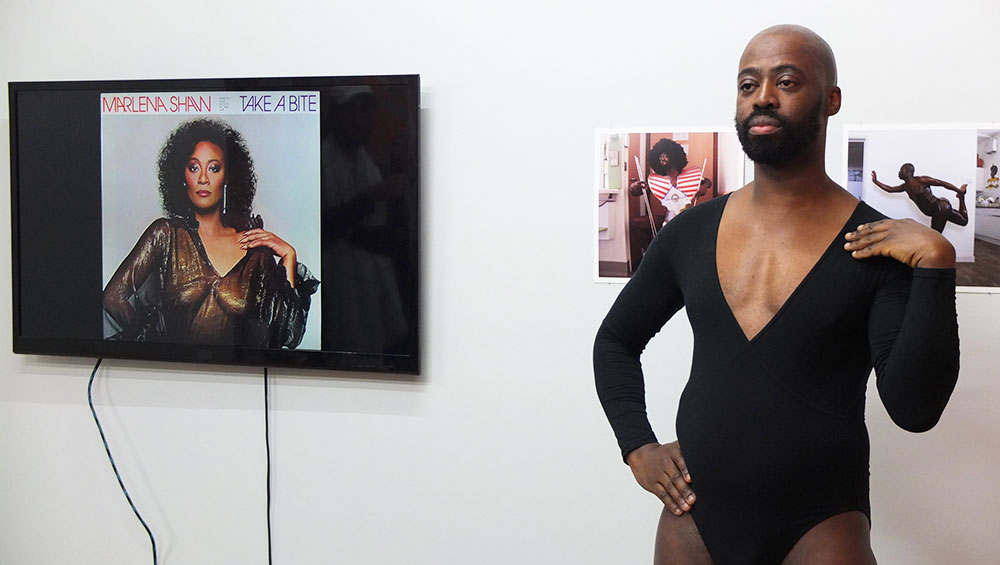
Harold Offeh. Covers Live, Performance at P! Gallery, NYC, 2019. Photo: Suzanne Mooney.
by VERONICA SIMPSON
Harold Offeh (b1977, Accra, Ghana) has been making playful, provocative performance and video work that mines a rich emotional and intellectual seam of pop culture, identity, conformity and denial for well over two decades, but I did not fully encounter the sucker punch of hilarity and humanity in his work until the South London Gallery’s excellent group show of 2018, Knock, Knock: Humour in Contemporary Art. One of its standout pieces, Smile (2002), an early video, brings us up close to Offeh’s tightly cropped, grinning face. It fills the TV screen while Nat King Cole’s unmistakeable, honeyed tones delivers the bitter-sweet lyrics to this famous 1954 recording of the song of that name, the music for which was written by Charlie Chaplin. Thus Offeh achieves a tragi-comic triple whammy with performance, lyric and composer. An endurance piece, like most of Offeh’s performance works, as the song progresses, you can see the strain in his facial muscles, as his jaw, cheeks and lips start to twitch and flex, transforming that huge grin into a grimace. It makes you reflect on the smile as an instrument of appeasement or denial, and how it can turn into the opposite when twisted out of shape or taken out of context.
Harold Offeh. Smile, 2001. Video, 2 min 58 sec.
Ceri Hand, a former director of programmes at Somerset House, said recently of Offeh: “He is committed to tugging at the edges of things and drawing them and us in closer. He is a shapeshifter, a cuttlefish prepared to make a spectacle of himself for us, to swim in the darkness to reveal the shafts of light.” In his own words, Offeh says: “I'm really interested in histories and narratives and who shapes the structures of history. I’m interested in the body as a primary tool of investigation and discovery.”
Offeh’s work riffs on a multiplicity of influences, drawn from popular music, film and mainstream cultural trends, while interrogating our acceptance of political, class, gender and racial “norms”. He might be interrogating the privilege of white, middle-class self-help books (Four Ways to Feel Amazing, 2002) or foregrounding the joyful energy of Brazilian dance culture as well as the country’s widespread exploitation of low-skilled labour (Haroldinho, 2003). His Snap Like a Diva (2012-20) is an ongoing workshop format celebrating the role of the finger click in 1970s and 80s underground gay nightclub subculture.
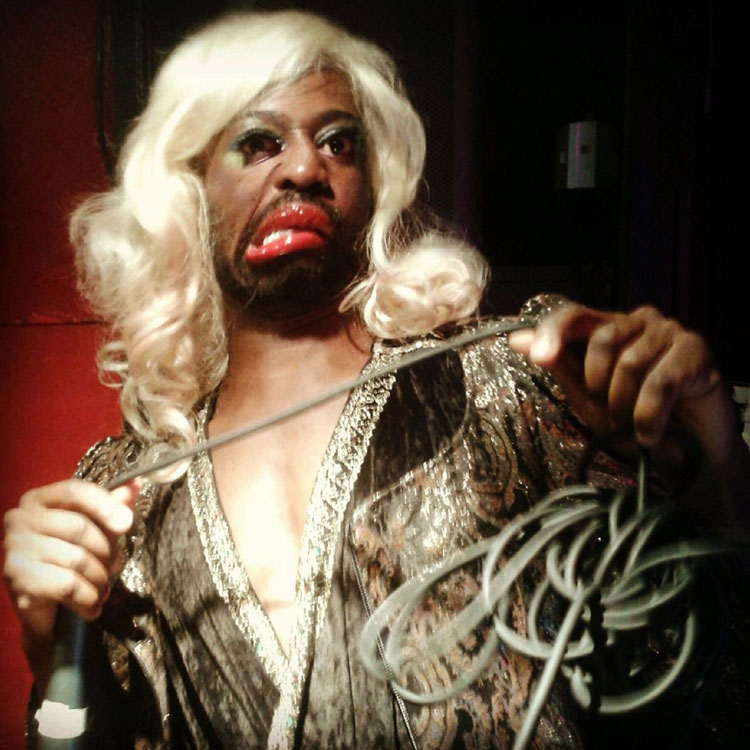
Harold Offeh. Snap Like a Diva, Performance, 2012.
He also celebrates 70s and 80s album-sleeve art by black singers in his Covers series (2008-20), juxtaposing iconic album-sleeve imagery with everyday settings, but with him playing all the parts, in costume. Participation is increasingly woven into his practice. In Choreograph Me (2015-20), Offeh offers his own body as material for a series of performative gestures. His 2019 workshops in the London borough of Croydon resulted in an exhibition, Croydon Plays Itself, created and curated in collaboration with local schools and community groups, aided by Turf Projects and the Museum of Croydon, to express aspects of a London suburb that has often appeared in film, but almost never as itself.
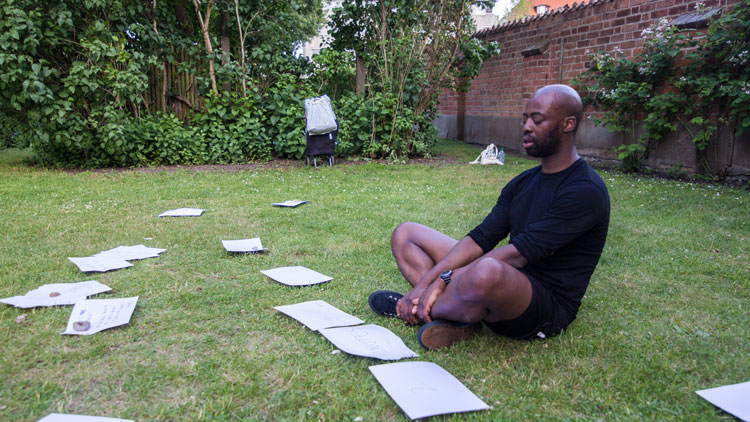
Harold Offeh. Choreograph Me, Performance Roskilde, Denmark, 2016.
Offeh has a BA in critical fine art practice from the University of Brighton and an MA in fine art photography from the Royal College of Art. He has shown widely in Britain and abroad, including in London at Tate Britain, Tate Modern and the South London Gallery; the Studio Museum in Harlem, New York; MAC VAL, Paris; Kulturhuset, Stockholm; Kunsthal Charlottenborg, Copenhagen; Espaço Bananeiras, Rio de Janeiro; and at the CQL Design Center, Shanghai. He lives in Cambridge and works in London and Leeds, where he is a reader in fine art at Leeds Beckett University – which recently awarded him a PhD for his practice exploring the activation of black album covers through durational performance - and a visiting tutor at the Royal College of Art. He was a Paul Hamlyn Visual Arts Award recipient in 2019.
This spring, Offeh will appear in Untitled, Art on the Conditions of Our Time, a major group exhibition of British artists of African descent at Kettle’s Yard, with a Covers Playlist video, and documentation of his 2018 Toronto performance Down at the Twilight Zone. In July, Offeh will be showing a new video commission exploring the redemptive power of joy through social dance for the Wellcome Collection’s On Happiness show, in the first iteration, titled: Joy and Tranquillity. In June, he will realise his first major public sculpture as part of the annual Bold Tendencies exhibition in Peckham, south-east London. Entitled Hail the New Prophets, it will be the third instalment in his Afrofuturist collaborative, curatorial project inspired by the music and creativity of Sun Ra and George Clinton, the first iteration of which appeared at the South London Gallery in 2006.
Studio interviewed Offeh on WhatsApp in February 2021.
Veronica Simpson: I was so pleased when you were announced as a Paul Hamlyn Award-winner, because I know from talking with previous recipients how pivotal that sum of money can be in supporting artists (£60,000 over three years, with no strings attached). Have you been able to direct that funding towards anything specific yet?
Harold Offeh: Not necessarily to the fullest extent. It was obviously an amazing thing to get a Paul Hamlyn Award. I still can’t quite believe I did. But when the pandemic hit, I decided I was not going to worry too much about the award and just take time, and then it would become apparent how best to use those resources in relation to things I wanted to do.
For me as an artist, the award was more significant for the level of visibility it’s given me. I don’t have a commercial profile. I haven’t had big solo shows in big public galleries. A lot of the work I do is with gallery education, with community groups, or it’s in live art, with live performances. I’m someone who has been around for a while, but I’m not as visible or as well-known as some of the people who have received that award - lots of them have been Turner prize-winners. The money is amazing. But if you’re someone who has not had a certain kind of cultural currency within the art world, it’s been gratifying in terms of bringing opportunities.
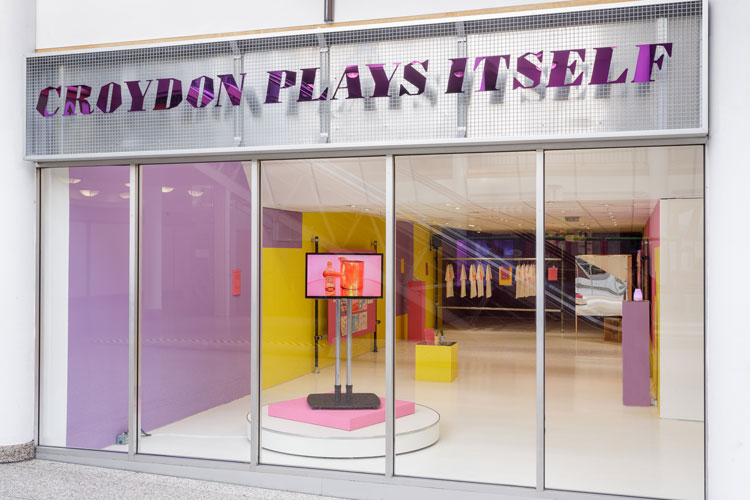
Harold Offeh. Croydon Plays Itself, installation view, Turf Projects, 2019. Photo: Tim Bowditch.
VS: In conversations with artists and curators over the last year, I feel there has been a shift, and that there will be new opportunities to foreground art that is less about celebrating - or enriching - the usual suspects. I am hearing lots more excitement about art that explores diverse experiences and expands engagement with bigger issues.
HO: This is the challenge. For me, with teaching, I am always asking: who is not part of the conversation? That is who you need to be addressing. I want us to be really mindful of who is not in the room.
VS: Pre-pandemic, you had a full 2020 lined up, though a lot of that has now been pushed into 2021. Your first 2021 show, at Kettle’s Yard, was supposed to open in January, I believe.
HO: That has now been postponed until May. That show has been interesting: it is part of the gestation of a show whose first iteration was in 2017, at the New Art Exchange Nottingham (Untitled: Art on the Conditions of Our time, showcasing contemporary African diaspora artists in the UK). The Kettle’s Yard show is a really interesting one, an amazing group of artists. The premise is in some ways trying to do a survey of black British artists, but without necessarily having that identity be the subject of the work.
When the show opened in Nottingham, it was alongside The Place Is Here at Nottingham Contemporary, a really important show in reintroducing the art world to this seminal generation of British black and Asian artists of the 70s and 80s. A lot of them were my teachers and mentors and it has been really gratifying to see how that show boosted the level of visibility for people such as Lubaina Himid, Sonia Boyce and Sutapa Biswas.
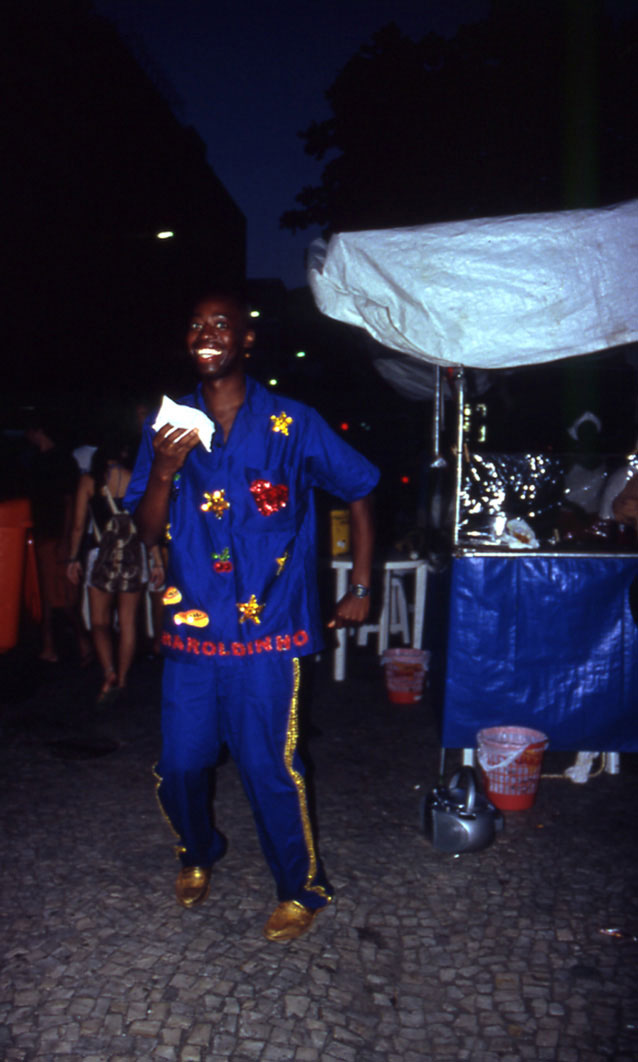
Harold Offeh. Haroldinho, Performance, Rio, Brazil, 2003.
VS: That brings us to another major shift that has crystallised during the pandemic: with the Black Lives Matter movement taking off here and in the US, the need to explore and expose systemic racism has really gained traction.
HO: I think we have yet to see how that will play out in terms of systemic and structural change. I feel we’re still very much at the beginnings of a conversation. In many ways I think having a sort of shared language with the US, and having it as a cultural example allows the UK to skirt around some issues. America is so extreme. The history is so visible and tangible that there can be a certain smugness here – like: “We’re not America.” That can often be a weird and problematic cover for exploring and confronting the truth of our own history and the narratives within our history.
VS: But I do think those conversations are much more prevalent now - in a way that they weren’t, for example, when those Nottingham shows opened in 2017 - and being addressed in forums where people are curious and willing to investigate their assumptions.
HO: Curiosity – that’s such an important quality. Systemically, there’s a real issue with the kind of learning culture that we’re creating in the UK, which doesn’t always engender curiosity. There are wild disparities in people’s experiences of education. It becomes really problematic when education is predicated on a transactional relationship: you get this or that qualification in order to achieve this job or this financial status. The idea of intellectual curiosity is seen as frivolous or metropolitan and everything is seen as transactional. I find that corrosive.
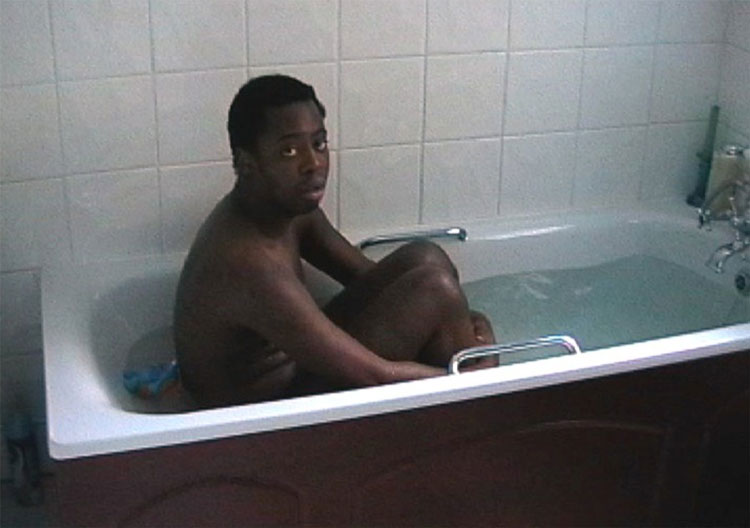
Harold Offeh. 4 Ways to Feel Amazing, 2002. Video, 3 min.
VS: There is also – in an age of constant online entertainment - an absence of boredom in children’s lives in which a spirit of curiosity and experimentation can flourish. You have talked fondly of your childhood as a “latchkey kid” in north London: with your mum doing several jobs, you had to entertain yourself when you got home, and obviously, in the 80s, TV would have played a central part in that. There is a quality of that era’s analogue entertainment – something grainy, improvisatory, visceral and real - that prevails in your work. Are you still using any analogue technology?
HO: Not really. I still have analogue equipment. But I rarely use it, partly because of the practical demands of showing and the inherent need for people to want big file sizes in order to play on high-res screens. For me, there is an analogue sensibility, which I think I have carried through - like, my approach to editing in camera [in which, instead of editing after shooting, the director shoots the sequences in a preplanned order]. When you’re used to working with tape, and you’ve got a maximum of 60 minutes, you work to the amount of tape that you’ve got, whereas, when you have a huge memory card, you can shoot and shoot and shoot. That forces a different kind of sensibility when you’re making work. I used to do Super 8 films as well, which was so expensive. A three-minute reel forces you to be very economical, and really think through what you’re capturing in the moment. That is part of the materiality of it as well. As someone who got to grips with video in the 90s, I’m aware that lots of kids now are concerned with the pristine and polished and a certain slickness. Maybe this is retrospectively romanticising it, but we had more of a punk or DIY approach, more concerned with the immediacy and impact.
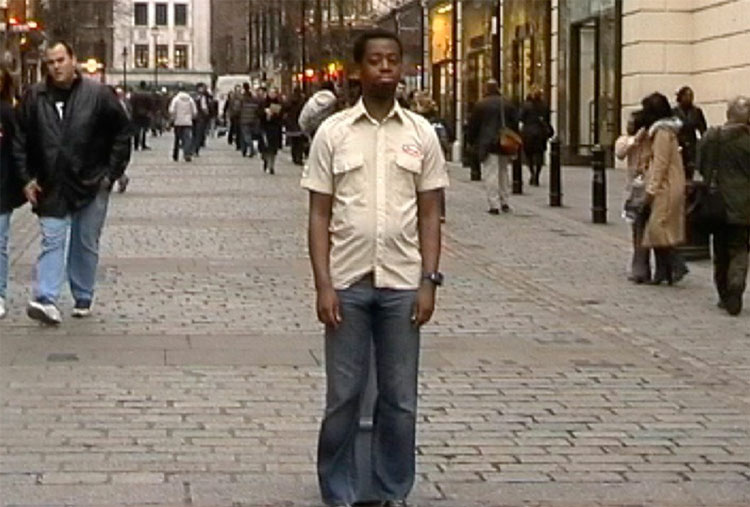
Harold Offeh. 4 Ways to Feel Amazing, 2002. Video, 3 min.
When I first started making moving imagery, it had to be three minutes, so I didn’t care what the lighting was like; the camera was a means to explore and pose a question and it was almost freeing because I wasn’t anxious about the sound. It’s that sensibility of: how can I adapt these tools? I was not necessarily worrying about being a skilled expert, but using the tools available to make something that’s impactful. That’s very liberating. Skill and learning and craft are important, but I speak to that moment in the 70s when punk and hip-hop were these two DIY forms that emerge in a period of economic collapse and crisis. It seemed significant that these two forms emerged and they’re both cross-cultural, interdisciplinary but they’re both democratic, whether it’s two turntables and a microphone or beatboxing or just two guitars and a drummer.
VS: Despite the delays to your schedule, were you able to remain busy in 2020?
HO: I am very lucky because a lot of projects that were ongoing haven’t been cancelled. For a lot of artists that’s not the case and that’s been devastating. Mine have been postponed. Uncertainty comes with that, but uncertainty is the new normal. It has meant I have had more time to engage with certain projects and develop initiatives. I have been doing lots of teaching, which I do anyway. But it has been so interesting in terms of how those conversations with students have helped to get me out of my own internal conversation and dialogue and worry. When you are having to deal with young people - with all their expectations of being at university and going to art school - being stuck in their bedrooms, we’re asking can they find potential in that, in the way that artists do? In uncertain conditions and climates, artists find opportunities. That is something that has sustained me. Our students have found ways to make work, really brilliant work.
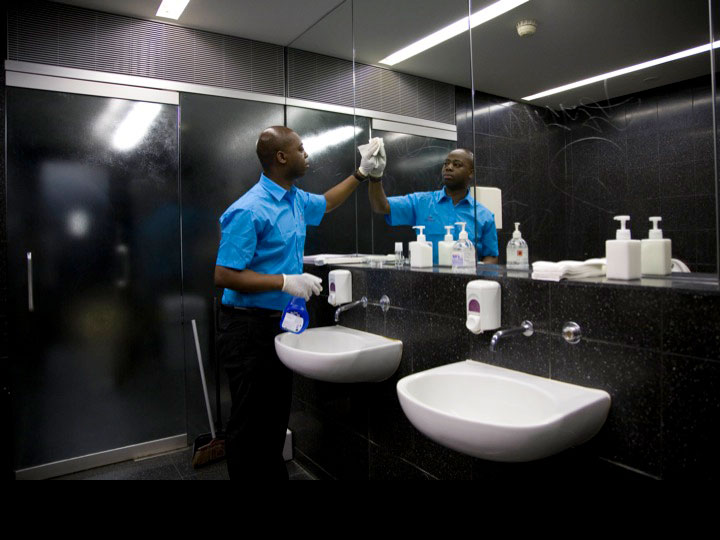
Harold Offeh. Services Rendered Toilet, Performance at Tate Modern, 2009.
VS: The pandemic has thrown a new angle on works that would have been planned before the pandemic and, while I love the sound of your forthcoming Wellcome Collection commission, exploring the redemptive power of joy through social dance, of course social dance in real life has become out of the question in the last year. How has that impacted on your approach?
HO: It’s been a bit of a rollercoaster ride. We were meant to be filming in March last year. Then the pandemic happened. The premise of the work was looking at medieval dancing plagues, at the histories and manifestations of how people had responded to collective societal traumas through movement, dance and durational social dance in particular. We were going from the medieval period up to the 90s, and the Aids danceathons, which were fundraisers, as well as the depression-era dance marathon competitions. Suddenly, in 2020, I thought: I am making a work about dancing in response to a pandemic. It suddenly felt like the work would be seen as opportunistic, especially in that first lockdown. So I waited. In fact, I just shot it at the end of January. We did it under Covid-safe conditions. I am working with an amazing choreographer, Vânia Gala. Originally, we had developed a number of scores and we were going to have different performers responding to collectivity and movement. We have had to facilitate that remotely. Each of the performers was filmed in their own space. We sent out all the equipment and lights and the performers crewed their own shoots, albeit supported remotely by a tech team. Then they set up cameras in each location to record what they were doing. We could see each other on the Zoom screen, and everyone was performing to the scores at the same time, but in their own spaces. The work is called Joy Inside Our Tears.
The first part of the exhibition is called Joy and Tranquillity, focusing on those particular states. It’s going to be split across two floors. I’m in the joy section. There are four commissions of contemporary artists. In addition, they are using archival material from the Wellcome Collection for mapping different cultural and historical experiences of joy and tranquillity.
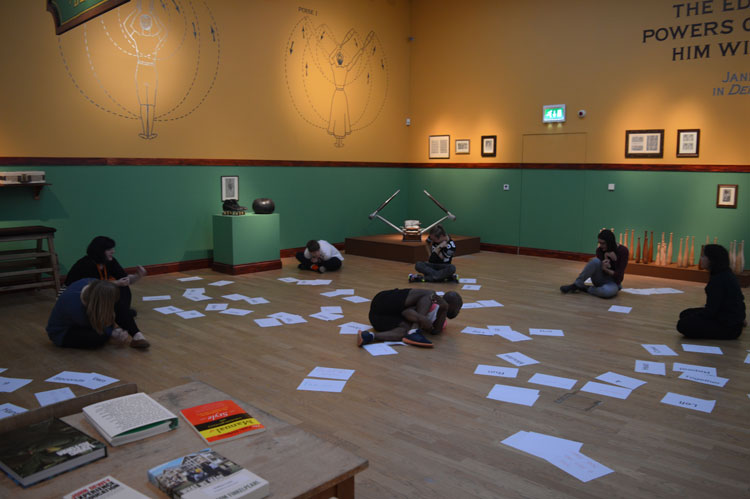
Harold Offeh. Choreograph Me, Performance Middlesbrough, 2015.
VS: I guess we have all had to engage with new means of acquiring tranquillity, in lockdown.
HO: I don’t want to sound glib or cliched. There has been trauma, but also moments of self-knowledge. Some people have been able to access healing and coping strategies. It’s obviously a very diverse mix, but for all that there has been so much isolation, loss and loneliness, there have also been qualitatively good things that have happened.
VS: There have been obvious challenges for an artist whose work is so much about participation. How and when did you realise that you enjoyed and had a talent for that kind of collaborative work?
HO: I think it just emerged from performances: I would be doing actions or things on the street and recording them and people would ask me what I was doing and I’d talk to them. I had always been interested in popular cultural stuff - doing cabaret, drag and in clubs on the social side. That was another way of engaging audiences. I liked that it was also something I could do within my work; it didn’t have to exist within these purely social spheres. I started to get asked to do workshops and I really enjoyed thinking through how I might facilitate or support or collaborate or work with people and that became a big incubator for lots of ideas. When you’re doing a workshop, you’re not always in control. You have to create a framework but you have to allow other peoples’ voice and creativity to have a purchase on what you’re proposing.
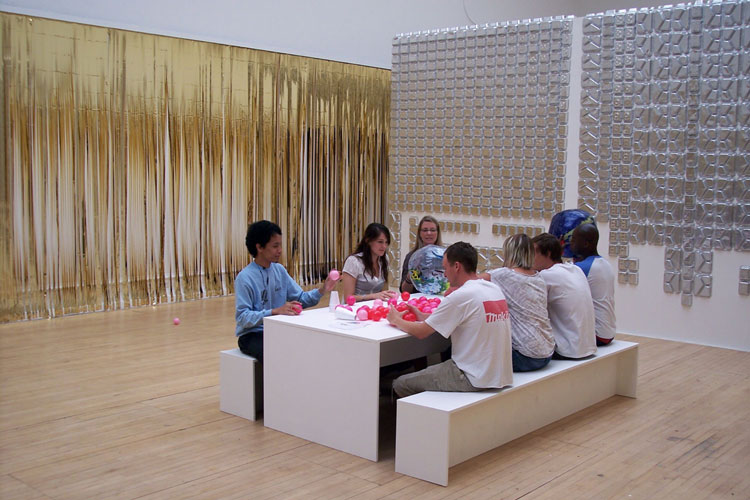
Harold Offeh. The Mothership Collective, installation at South London Gallery, 2006.
VS: As a Peckham resident I am really looking forward to seeing what you create here for the 2021 sculpture festival, Bold Tendencies, which we hope will be able to take place – as it did last year – in the open air, on the roof of Peckham’s multistorey car park. Last year, you put out an open call for contributions, inviting people to send you their thoughts, films and sound recordings, to do with the pandemic, to incorporate in this year’s work. What kind of response did you get?
HO: We received a really diverse and super-intergenerational response. We’re only now starting to sift through that and think about how that might blend together with the physical sculpture itself. The idea is to create a mix tape or soundtrack that will be broadcast from the sculpture and we’re also going to be working on a series of podcasts that will again be broadcast as part of the show. I am hoping to bring in other cultural voices, emerging artists, writers, again to speak to this aspiration of envisioning the future and prophesying, speculating.
VS: Can you tell us more about the sculpture?
HO: Yes, we are in the detailed design stage. It’s going into fabrication at the end of February. I’m making a scale model of Sun Ra’s spaceship from his 1974 movie Space is the Place. It’s this weird yellow eyeball thing. That’s going to be sitting on top of the Bold Tendencies roof, as if it has just descended. We’re hoping there can be a degree of engagement with it, under Covid-safe conditions. I’m hoping it can operate as a slide: you climb into it and you arrive by sliding out of it. I’ve been interested in artists designing playgrounds for a long time. There was a brilliant group show called The Playground Project, at the Künsthalle in Zurich in 2016. And there’s a Niki de Saint Phalle slide I love, in which kids descend from huge tongues and come out of its mouth (Golem, 1971-2).
VS: Looking ahead to later this year, in the hope that restrictions start lifting, what have you got planned?
HO: There are definitely people I’d love to collaborate with. In some ways, lockdown has facilitated that. I’ve gone to so many talks and online seminars – Zoom things have brought people together. There are definitely people I would love to work with and I’m developing various lines of enquiry. I also want to paint my own sculptural stuff, and that’s something I’m looking to take on in future projects.
VS: So it sounds like the Paul Hamlyn Award will help to sustain these new avenues for the second half of 2021 and beyond.
HO: For me, it’s about being able to have a degree of independence, to initiate a project or a body of work. I am looking forward to the summer.
• Harold Offeh’s work will appear in the group show Untitled: Art on the Conditions of Our Time at Kettle’s Yard, Cambridge, from 8 May – 11 July 2021 (dates subject to change).